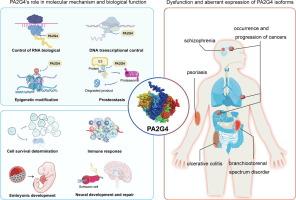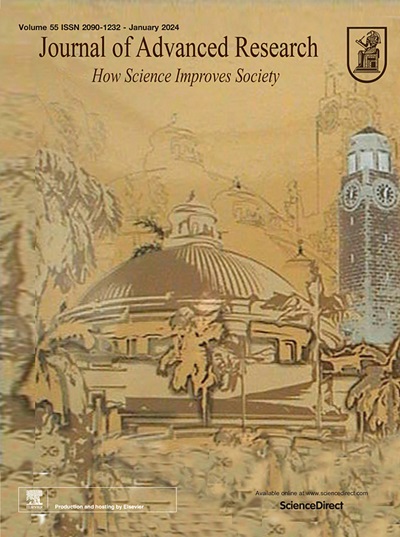PA2G4 in health and disease: An underestimated multifunctional regulator
IF 11.4
1区 综合性期刊
Q1 MULTIDISCIPLINARY SCIENCES
引用次数: 0
Abstract
Background
Proliferation-associated protein 2G4 (PA2G4), also known as ErbB3-binding protein 1 (EBP1), is an evolutionarily conserved, ubiquitously expressed, multifunctional factor in health and disease. In recent decades, its role as a sophisticated regulator in a broad range of biological processes has drawn widespread attention from researchers.Aim of review
We introduce the molecular structure, functional modules, and post-translational modifications of PA2G4. We further elaborate on its role and function in immune microenvironment modulation, cell growth, neural homeostasis and embryonic development. In particular, we summarize its relevance to tumorigenesis and cancer progression and describe its molecular mechanisms in regulating the hallmarks of cancers. This review aims to provide a comprehensive blueprint of PA2G4 functions and to inspire further basic and translational studies.Key scientific concepts of review
Owing to its versatile domains and motifs, PA2G4 regulates a variety of molecular processes, including transcription, translation, proteostasis and epigenetic modulation, suggesting its critical roles in maintaining homeostasis. There are two isoforms of the PA2G4 protein: PA2G4-p42 and PA2G4-p48. While both isoforms regulate cellular activities, they often exert distinct or even contradictory effects. Dysfunction and aberrant expression of PA2G4 isoforms lead to the occurrence and progression of various diseases, indicating their role as predictive markers or therapeutic targets.

求助全文
约1分钟内获得全文
求助全文
来源期刊

Journal of Advanced Research
Multidisciplinary-Multidisciplinary
CiteScore
21.60
自引率
0.90%
发文量
280
审稿时长
12 weeks
期刊介绍:
Journal of Advanced Research (J. Adv. Res.) is an applied/natural sciences, peer-reviewed journal that focuses on interdisciplinary research. The journal aims to contribute to applied research and knowledge worldwide through the publication of original and high-quality research articles in the fields of Medicine, Pharmaceutical Sciences, Dentistry, Physical Therapy, Veterinary Medicine, and Basic and Biological Sciences.
The following abstracting and indexing services cover the Journal of Advanced Research: PubMed/Medline, Essential Science Indicators, Web of Science, Scopus, PubMed Central, PubMed, Science Citation Index Expanded, Directory of Open Access Journals (DOAJ), and INSPEC.
 求助内容:
求助内容: 应助结果提醒方式:
应助结果提醒方式:


